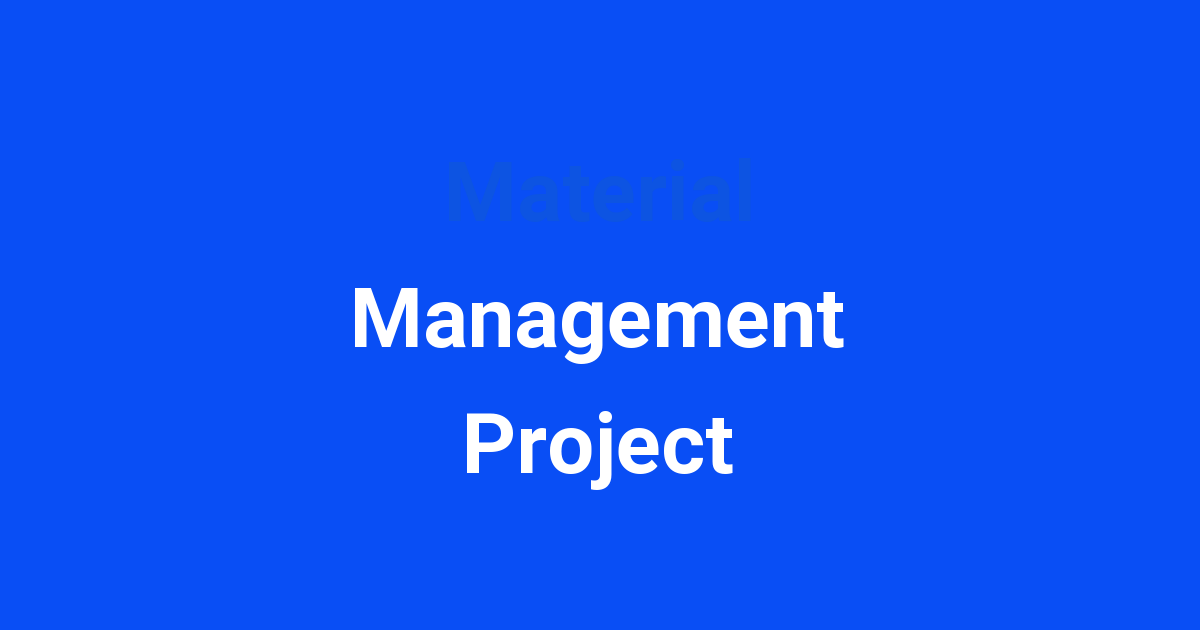Revamp of material management project.
Material Management Project
Introduction
Material management is an important aspect in the field of engineering, as it involves the planning, organizing, and controlling of the flow of materials from the point of purchase to the point of consumption. Efficient material management ensures that there is an adequate supply of materials at the right time, in the right quantity, and at the right price. However, many organizations still struggle with manual and outdated systems when it comes to managing their materials effectively. This project aims to address these challenges by proposing a new and improved material management system.
Problem Statement
The current material management systems used by many organizations are often manual and time-consuming. This leads to inefficiencies, such as delays in processing orders, inaccurate inventory levels, and higher costs. Furthermore, manual systems are prone to errors, which can result in stockouts or overstock situations. These issues can have a significant impact on the overall performance and profitability of an organization. Therefore, there is a need for a more automated and efficient material management system.
Existing System
The existing material management system in many organizations typically involves manual processes, such as tracking inventory levels, placing orders, and receiving materials. This system is often inefficient and prone to errors, as it relies on paper-based records and spreadsheets. Additionally, the lack of real-time visibility into inventory levels and order status makes it difficult for organizations to make informed decisions regarding their material requirements.
Disadvantages
Some of the disadvantages of the existing material management system include:
1. Manual processes lead to inefficiencies and errors.
2. Lack of real-time visibility into inventory levels and order status.
3. Difficulty in managing and tracking materials across multiple locations.
4. Higher costs due to overstock or stockout situations.
5. Inability to forecast or anticipate future material requirements accurately.
Proposed System
The proposed material management system aims to address the limitations of the existing system by introducing automation and integration. The system will be web-based, allowing users to access it from anywhere at any time. It will include features such as real-time inventory tracking, automated replenishment, and forecasting tools. The system will also integrate with other systems, such as accounting and procurement, to provide a seamless end-to-end solution for material management.
Advantages
Some of the advantages of the proposed material management system include:
1. Automation of manual processes, leading to increased efficiency and accuracy.
2. Real-time visibility into inventory levels and order status.
3. Improved tracking and management of materials across multiple locations.
4. Lower costs due to optimized inventory levels and reduced wastage.
5. Better forecasting and planning tools for anticipating future material requirements.
Features
The proposed material management system will include the following features:
1. Real-time inventory tracking: Users will be able to view the current inventory levels of all materials in real-time.
2. Automated replenishment: The system will automatically generate purchase orders based on reorder points and lead times.
3. Forecasting tools: The system will provide forecasting tools to help users anticipate future material requirements accurately.
4. Integration with other systems: The system will integrate with accounting and procurement systems to streamline the material management process.
5. User-friendly interface: The system will have a user-friendly interface that is easy to navigate and use.
Conclusion
In conclusion, material management is a critical aspect of engineering that can have a significant impact on the overall performance and profitability of an organization. The proposed material management system aims to address the limitations of the existing systems by introducing automation and integration. By implementing this system, organizations can improve efficiency, reduce costs, and make more informed decisions regarding their material requirements. Overall, this project represents a step towards modernizing material management practices and ensuring the success of engineering organizations in the future.

